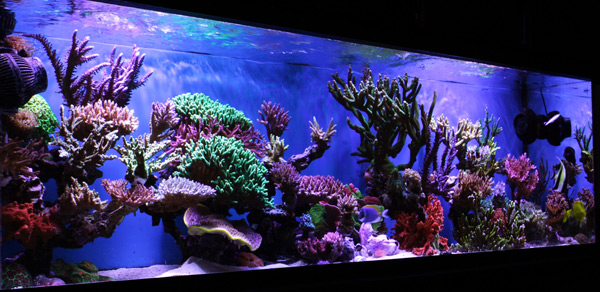With towering pillars of small-polyp stony corals framed against a spotless blue background, this aquarium makes me feel as though I’ve been plopped down smack dab in the middle of a coral reef, peering into the blue abyss beyond. Being a landlocked scuba diver, it’s easy to imagine the ocean dreams this reef elicits for anyone who gets the opportunity to enjoy it.
The Aquarist
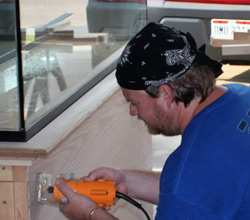
This reef is the work of Brian Babcock, also known as “Lazylivin” on a number of marine forums. A 15-year veteran of the aquarium hobby, Brian has spent 10 of those years on the dark…err, I mean, salt side. Starting with a 90-gallon fish-only system in the mid 90s, Brian kept this system up and running until a few years into the millennium when a move forced him to shut it down. It was revived a few years later as a soft coral system and then later upgraded to his current 125-gallon, SPS-dominated reef aquarium. As is often the case with aquarists, when Brian found his local reef club (Western Ohio Reef Club) in 2006, his ability to share the experience with others only further fueled his involvement in the hobby. Underestimated the power of the dark side, he did.
Aquarium, Prop System, Refugium, & Sump Overview
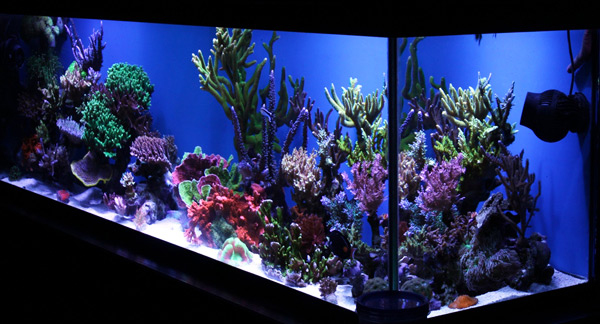
Brian’s 125-gallon glass box has been up and running since August of 2010. The standard dimension aquarium is lit by (2) 400w 20k metal halides sandwiching an Ocean Revive 120w LED in the middle. These lights are mounted on a rail so they can be easily moved out of the way when it’s time for tank maintenance.
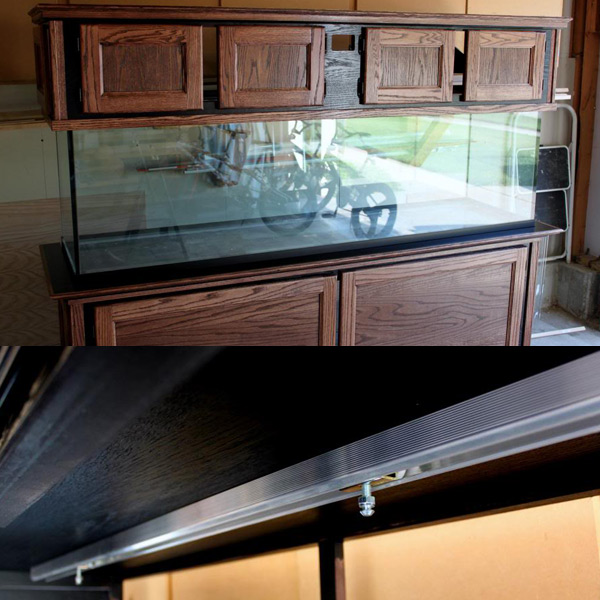
The display tank is drilled with a 1.5” straight pipe/strainer overflow and includes a 1” secondary pipe. From the overflow, water begins a long round-trip voyage before returning to the display tank. The first stop takes it down to the basement, home to a custom 150-gallon (120x22x13) acrylic tank, which is divided into three chambers for separate purposes. The first chamber houses the Reef Octopus 250 (with Bubble Blaster 5000) skimmer, the second is filled with coral propagation racks, and the third functions as a refugium with chaeto.
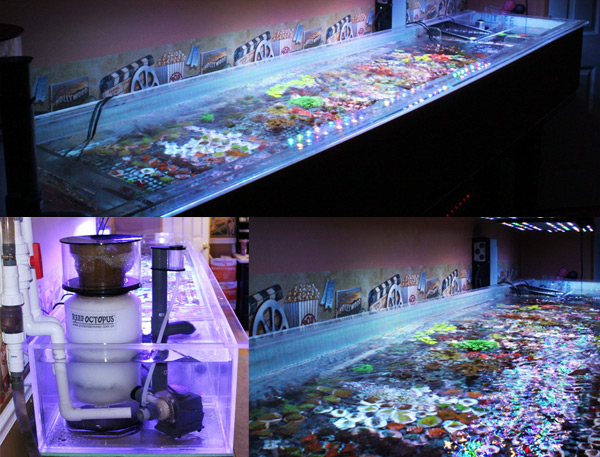
Next it’s on to the sump, which is a 55-gallon aquarium located under the aforementioned acrylic tank. It houses the rest of the equipment, including heaters, probes, carbon, GFO, Iwaki PCX40 return pump, Level Loc auto top off (connected to RO/DI unit), and additional live rock.
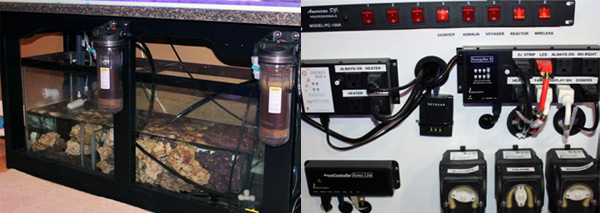
A Neptune Systems Apex controller gives direction to a good portion of the support equipment, including the lighting, heaters, and dosing pumps. This plays a big part in the stability of this aquarium’s parameters, which Brian points to as a big key to his success.
Tank Parameters & Maintenance
As you might expect, Brian puts a great deal of importance on maintaining water parameters and keeping them stable. Here is how they look:
- Temperature: 78 – 78.5 F
- Specific gravity: 1.025
- Calcium: 380 – 420 ppm
- Alkalinity: 9 – 10 dKH
- Magnesium: 1300 – 1350 ppm
- Phosphates: .02 – .07 ppm
- Nitrate: ? 5 ppm
Brian utilizes Salifert test kits for his water testing, with the notable exception of phosphates, which he checks with a Hanna meter. During normal times of maintaining the aquarium, he’ll typically test calcium, alkalinity, and magnesium once a month. If anything in the system has recently changed to influence consumption or saturation levels, he will increase testing frequency to weekly or daily, depending on the situation. Observed daily, he uses pH as an indicator of whether the alkalinity level should be looked into further. Ammonia and nitrites are not tested, while nitrates get a periodic look twice a year.
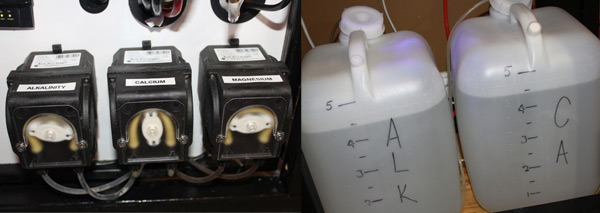
Calcium, alkalinity, and magnesium are maintained with Bulk Reef Supply dosing pumps that are connected to 5-gallon jugs of additives. The Apex handles a dosing schedule that delivers 26 mL of each element every hour. This amounts to a gallon of each BRS additive being consumed every 6 days!
Here is a glimpse at Brian’s maintenance schedule:
- Every few days: Clean front glass
- Weekly: Empty/clean skimmer cup
- Bi-weekly: Clean side and back glass
- Monthly: 50-gallon water change, vacuum sand, fill dosing containers
- Quarterly: Clean circulation pumps
- Semi-annually: Clean MH glass, replace MH bulbs, replace dosing pump tubing
- Annually: Blow any detritus off rocks
Inhabitants
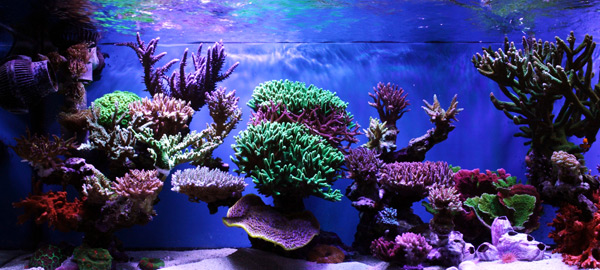
Corals
- Wide variety of SPS
- Assortment of LPS, soft corals, and zoanthids
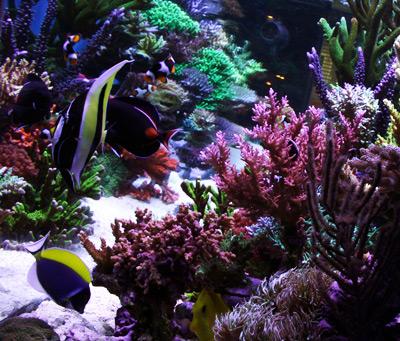
Fish (in display tank)
- Moorish idol (Zanclus cornutus)
- Powder blue tang (Acanthurus leucosternon)
- Achilles tang (Acanthurus achilles)
- Yellow tang (Zebrasoma flavescens)
- 2x Picasso clown (Amphiprion percula)
- Green mandarinfish (Synchiropus splendidus)
- Ruby red dragonet (Synchiropus sp.)
Other Inverts (in display tank)
- Peppermint shrimp (Lysmata wurdemanni)
- Bubble-tip anemones (Entacmaea quadricolor)
- Tube anemones (Cerianthus sp.)
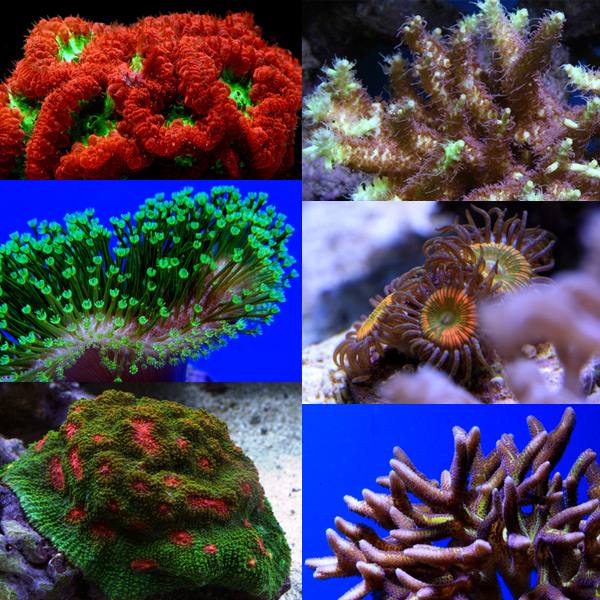
Fish (in basement tank)
- Sixline wrasse (Pseudocheilinus hexataenia)
- Yellow tang (Zebrasoma flavescens)
- 2x Clownfish
- Chromis
Other Inverts (in basement tank)
- Bubble-tip anemones (Entacmaea quadricolor)
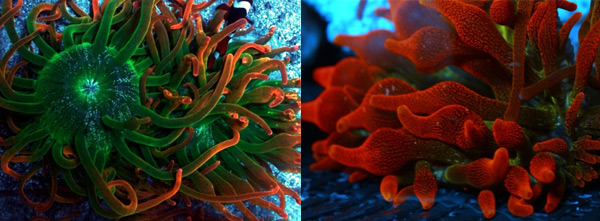
Brian’s Advice For Other Hobbyists
Keep alk stable above all. Prior to adding a new coral to your tank, remove it from its substrate and dip in a white container using Coral RX. If you find pests return it or throw it out.”
Photo credits: Brian Babcock


